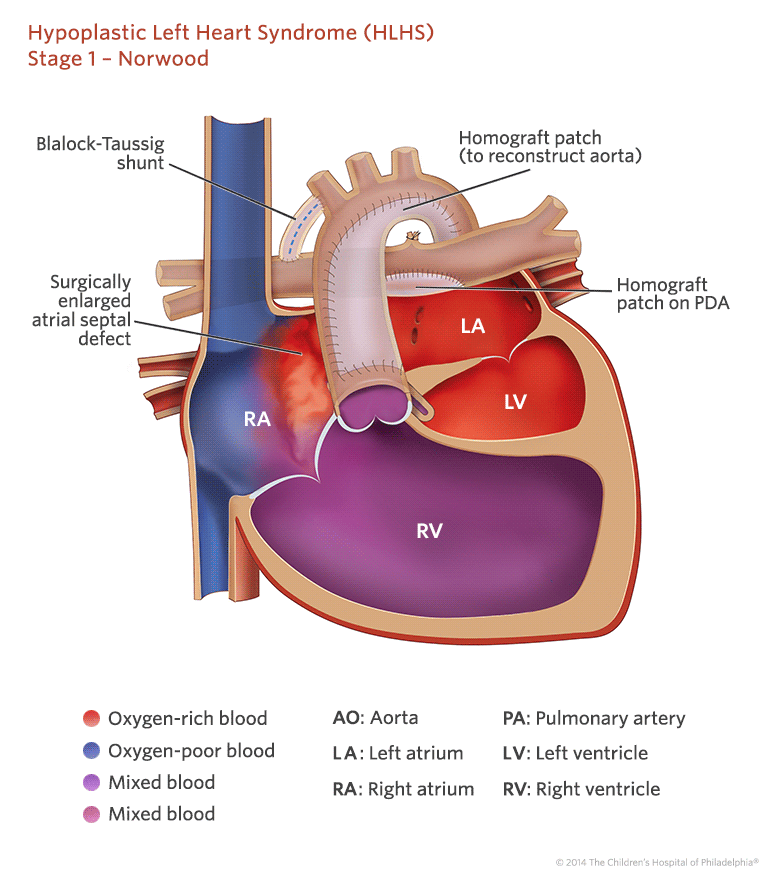The Norwood procedure is the first of three operations used to treat HLHS. It is usually performed within the first week of life and is an open-heart surgery done using the heart-lung machine. The Norwood is the most complex surgery of the 3 stage 'reconstruction' and is sometimes modified to suit the physiology of the child. It involves:
- Reconstructing the Aorta by stitching a portion of the Pulmonary Artery, the small Aorta, and an Aortic Homograft together in such a way that an almost normal sized "Neo-Aorta" is built. The 'new' Aorta is connected to the right ventricle via the pulmonary artery. This allows the right ventricle to act as the chamber pumping blood to the whole body.
- Cutting away the wall between the two upper chambers (atrium) so that there is no obstruction to blood returning from the lungs into the left atrium and flowing into the right ventricle.
- Providing an artificial Gortex tube (Blalock-Taussig shunt) between the right arm artery and the right Pulmonary Artery to allow blood flow into the lungs. Some surgeons use a shunt between the Pulmonary Artery tand the Right Ventricle instead of the BT shunt (Modified Norwood).
More Information
Hypoplastic Left Heart Syndrome HD
Synopsis: Norwood operation; Norwood operation (Sano); Bi-directional cavo-pulmonary connection (BCPC); Fontan operation with extracardiac conduit.
Hypoplastic Left Heart Syndrome: The Norwood Operation
Synopsis: Why is the Norwood operation done? How is the Norwood operation done? After the Norwood operation.
Hypoplastic Left Heart Syndrome: Norwood Operation
Synopsis: Norwood Operation Description
